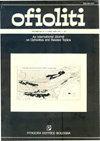波黑东北部中部dinaridic蛇绿岩带杂岩中侏罗世放射虫新记录及新特提斯动力学证据
IF 1.3
4区 地球科学
Q2 GEOLOGY
引用次数: 9
摘要
在横跨欧洲东南部巴尔干地区的中Dinaridic蛇绿岩带(CDOB)的蛇绿岩混杂岩中,从富燧石质泥质到粉砂质,获得了最新的巴约世-早Bathonian放射虫组合。波黑北部取样地点具有高度多样化的蛇绿岩套,由不同大地构造物源的基性岩和超基性岩组成。这使得放射虫定年成为在更广泛的区域背景下研究CDOB地球动力学历史的一个方便的补充工具。寄主沉积物及其伴生结晶岩的性质表明,放射虫沉积发生在相对靠近亚德里亚陆架边缘的地方,早于或同时于Dinaridic - netethys大地构造环境的快速转变,从活跃的脊岩浆作用转变为洋内俯冲环境和岛弧火山作用。蛇绿岩混杂岩形成的最小年龄由变质底的矿物平衡年龄(161±4 Ma)确定,其逆冲构造至少持续到牛津期(即Dinarides的MOR活动终止)。这一年龄与其他地方报道的迪纳里德-希列尼德造山系混合岩中沉积物的年龄吻合得很好。本文章由计算机程序翻译,如有差异,请以英文原文为准。
New record of middle jurassic radiolarians and evidence of neotethyan dynamics documented in a melange from the central dinaridic ophiolite belt (CDOB, NE Bosnia and Herzegovina)
Within the ophiolitic melange of the Central Dinaridic Ophiolitic Belt (CDOB) that stretches throughout the Balkans region in SE Europe, a latest Bajocian-early Bathonian radiolarian assemblage was obtained from chert-rich shaly to silty matrix. The sampling locality in northern Bosnia and Herzegovina is characterized by a highly-diversified ophiolitic suite, consisting of basic and ultrabasic rocks of different geotectonic provenances. This makes the radiolarian dating a convenient complementary tool for studying the geodynamic history of CDOB within a broader regional context. The host sediments and the nature of their associated crystalline rocks suggest that radiolarian deposition occurred relatively close to the Adria shelf margins, predating or being contemporaneous to the rapid transitions in the Dinaridic Neotethys geotectonic setting, changing from active ridge magmatism to an intraoceanic subduction environment and island-arc volcanism. The minimum age of ophiolite melange formation is defined by the mineral equilibration ages in metamorphic sole (161±4 Ma), with the obduction tectonics that must have lasted at least until the Oxfordian time (i.e. termination of MOR activity in the Dinarides). This age correlates well with the ages of sediments reported elsewhere in the melange of the Dinaride-Hellenide orogenic system.
求助全文
通过发布文献求助,成功后即可免费获取论文全文。
去求助
来源期刊

Ofioliti
地学-地质学
CiteScore
2.40
自引率
7.70%
发文量
1
期刊介绍:
Since 1976, Ofioliti provides an international forum for original contributions and reviews in the field of the geodynamics, petrology, geochemistry, biostratigraphy, stratigraphy, tectonics and paleogeography applied to ophiolitic terrains and modern oceanic lithosphere, including their sedimentary cover. Studies of topics such as geodynamics of the mantle, the evolution of orogens including ophiolites and paleoceanography are also welcome
 求助内容:
求助内容: 应助结果提醒方式:
应助结果提醒方式:


